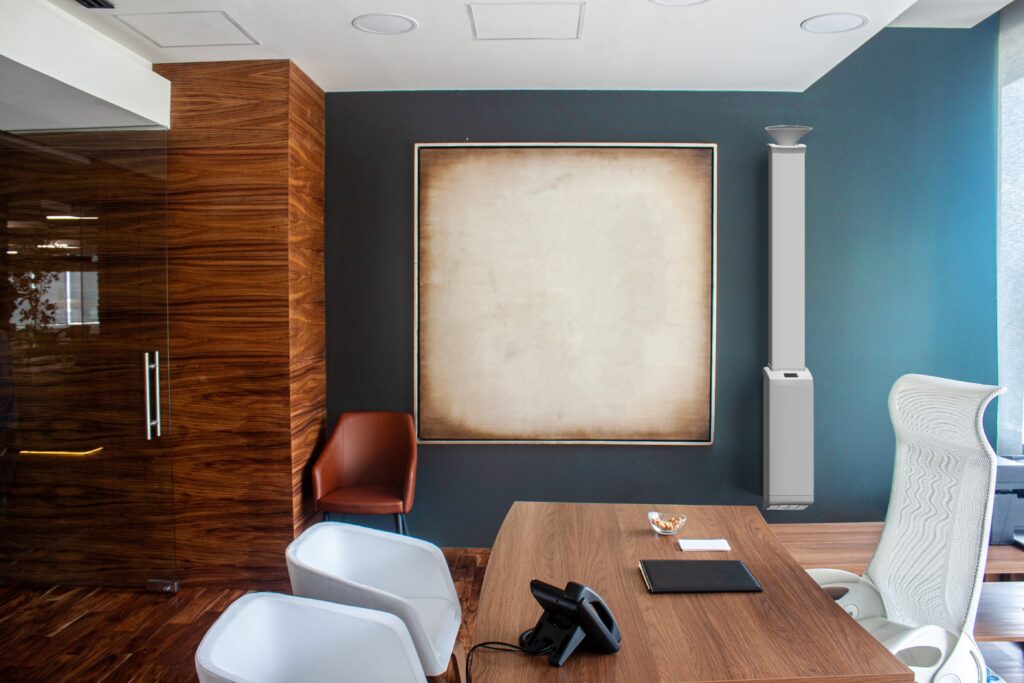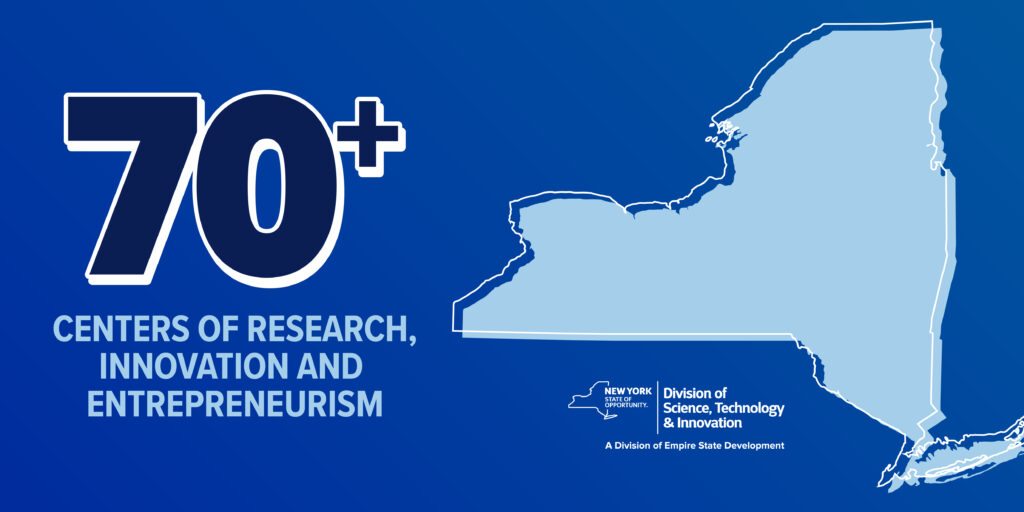Harnessing the power of UV-C Light
It was the summer of 2020 and Tom Dunbar had just recently retired after teaching physics for 22 years at Corning Community College. But now was not the time to kick back. Building off his teaching background and his experience in development engineering at Kodak and Westinghouse/IST, he founded a company called uvcPhyzx to address the air purification problems presented by the SARS-CoV-2 virus, which can cause COVID-19 illness.

With funding through the NYSTAR-backed Center of Excellence in Materials Informatics at the University at Buffalo (CMI), Dunbar and his new company partnered with Professor Francine Battaglia, a UB faculty expert in computational fluid dynamics and advanced modeling, to assess and strategize device placement in common public spaces such as offices, restaurants and medical facilities. The partnership not only helped move along research and prototype production, but Dunbar believes it was a factor in a uvcPhyzx presentation being accepted at the ASHRAE 13th International Industrial Ventilation Conference for Contaminant Control in June 2022 in Toronto, Ontario, Canada.
While it’s well understood that UV-C light will inactive viruses, most of the research has been on surfaces – putting a virus in a petri dish and shining a light on it. Dunbar and uvcPhyzx changed the approach by looking at how to clean air in a room effectively and safely. “The device they developed is an effective way of killing airborne aerosol bacteria and viruses in the air,” said Alan Rae, Director of the Center of Excellence in Materials Informatics at UB. “When you sneeze or cough, droplets fall to the floor. This new device draws these airborne particles up from floor level, cleans the air, and then releases the purified air up at high levels so your head is in cleaner air.”
With the help of the CMI and Professor Battaglia, uvcPhyzx was able to run modeling tests on how to best position the devices in the room, with various configurations and factors such as HVAC flowrates, and then position the clean airflow into the most useful spaces. “No one really, from what we’ve seen, has considered the way the air moves in the room,” Dunbar said. “This approach is not just about a system to clean the air – it cleans the air and tries to provide that air to where we expect occupants to be. So, you start to think of situations – sitting around the table in a conference room, an exam table in a doctor’s office – a lot of these configurations where people are congregating are pretty standard
“That’s one place where CMI really helped us because fluid dynamics is a very complicated subject and it’s very easy to produce misleading results. That brought us to the University at Buffalo to give us some sense of confidence in our results.”
The company found its way to CMI thanks to a referral from IncubatorWorks, a Western New York Incubator Network member, and New York State-Certified Business Incubator, another way in which New York State’s investment in technology, research, and development works to give businesses tools to succeed. UB CMI and the Western New York Incubator Network are both innovation assets within the NYSTAR network.
For years, New York State has been investing in and building out its innovation infrastructure through NYSTAR (Empire State Development’s Division of Science, Technology, and Innovation). NYSTAR oversees a robust, statewide network that provides innovators, entrepreneurs, and business leaders with access to the support they need to solve challenges and keep growing, even during periods of downturn. There are over 70 NYSTAR-backed centers across the state that are actively working to generate technology-driven economic growth.

